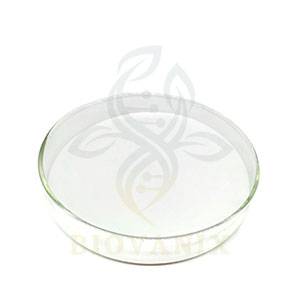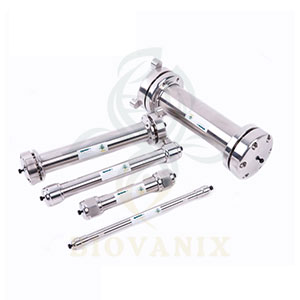Phases d'échange d'ions pour la sélectivité en chromatographie liquide
Why switching to compressed air technology improves HPLC reproducibility and lab safety.
Why Switch?
A Pneumatic HPLC Column Packing System eliminates pulsation, ensures uniform bed density, offers explosion-proof safety for flammable solvents, and reduces maintenance costs compared to electric pumps. It is the ideal choice for labs seeking high-efficiency separations and reproducible results.
Introduction
Are your chromatograms showing signs of peak tailing or splitting? Are you spending too much of your budget on pre-packed columns?
For many laboratories, the method of packing columns is an afterthought. However, the quality of your packing system directly dictates the quality of your separation. While manual packing or standard mechanical pumps were once the norm, modern chromatography demands higher precision.
Here are 5 clear signs that it is time to upgrade your lab to a Pneumatic HPLC Column Packing System.
1. Your Chromatograms Suffer from Peak Tailing or Splitting
The Problem: The most common sign of a poorly packed column is peak tailing, fronting, or splitting. This often occurs due to voids or channels forming within the stationary phase. The Cause: Traditional mechanical pumps (reciprocating pumps) create pulsations. These pressure spikes disturb the column bed during the critical packing phase, preventing the media from settling uniformly. The Pneumatic Solution: A pneumatic system uses compressed air to generate constant, pulse-free hydraulic pressure. This steady force ensures the slurry is compressed tightly and evenly, resulting in a uniform bed density and sharp, symmetrical peaks.
2. You Struggle with Batch-to-Batch Reproducibility
The Problem: You packed a column last week that worked perfectly, but the one you packed today has lower plate counts. The Cause: Inconsistent pressure application. Manual packing is notoriously variable, and electric pumps can struggle to maintain exact pressure setpoints under high load. The Pneumatic Solution: Pneumatic systems are “set-and-forget.” Once you set the input air pressure (e.g., 100 psi), the system amplifies this to a precise output pressure (e.g., 8,000 psi) and holds it indefinitely. This guarantees high reproducibility, ensuring every column performs exactly like the last one.
3. You Are Working with Hazardous or Flammable Solvents
The Problem: Packing columns often requires organic solvents like Methanol, Acetonitrile, or Hexane. Using electric pumps in these environments introduces a risk of sparks and potential explosions. The Cause: Electric motors and heat generation. The Pneumatic Solution: Safety is the #1 advantage. Our pneumatic packing system is 100% driven by compressed air or Nitrogen. It requires no electricity, making it intrinsically explosion-proof and safe for use in fume hoods with volatile organic compounds.
4. Your Maintenance Costs Are Eating Your Budget
The Problem: Electric HPLC pumps are designed to move clear liquids, not abrasive slurries. The Cause: When you use a standard HPLC pump for packing, the silica or polymer particles inevitably wear down the seals and pistons rapidly. This leads to frequent downtime and expensive repairs. The Pneumatic Solution: Pneumatic amplifiers are designed for heavy industrial loads. They have fewer moving parts and are robust enough to handle high-viscosity slurries without the rapid wear and tear associated with electric pump heads.
5. You Want to Scale Up to Semi-Prep Columns
The Problem: Manual packing or syringe methods might work for tiny capillary columns, but they fail when you move to 10mm, 20mm, or 50mm ID columns. The Cause: Larger columns require significantly higher flow rates and sustained pressure to pack the larger volume of media effectively. The Pneumatic Solution: Pneumatic systems offer scalability. By simply adjusting the air supply, you can generate the high flow and high pressure needed to pack everything from analytical (4.6mm) to semi-preparative columns efficiently.





